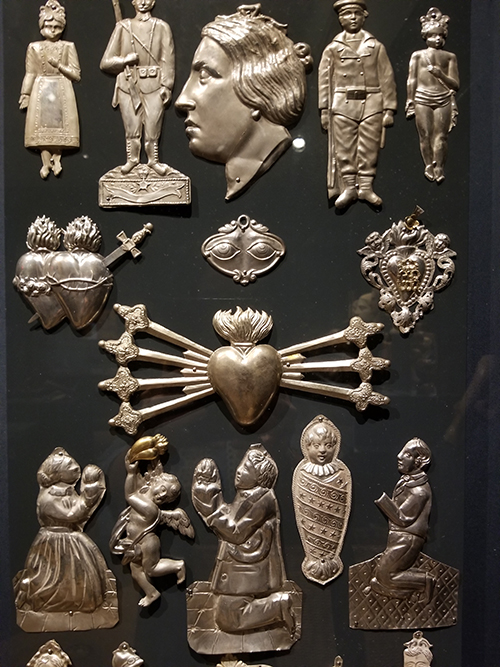Meaning or significance of an object is this season’s decorative art focus in New York. Whether considering a 3,000-year-old preserved floral collar from Tutankhamun’s embalming cache at the Met or the rose silk brocade “robe à la francaise”, circa 1775, at The Museum at FIT, get ready to enjoy exciting visual experiences but also rare opportunities for exploration beyond aesthetics when visiting these three exhibitions.
Jewelry: The Body Transformed
The Metropolitan Museum of Art
Through February 24, 2019
https://www.metmuseum.org/exhibitions/listings/2018/jewelry
Agents of Faith: Votive Objects in Time and Place
Bard Graduate Center Gallery
Through January 6, 2019
https://www.bgc.bard.edu/gallery/exhibitions/81/agents-of-faith-votive-objects
Pink: The History of a Punk, Pretty, Powerful Color
The Museum at FIT
Through January 5, 2019
https://www.fitnyc.edu/museum/exhibitions/pink.php
Who knew that jewelry is in fact the world’s oldest art form, predating cave paintings by tens of thousands of years? Drawing from all seventeen curatorial departments from within the Met, Jewelry: The Body Transformed, is an encyclopedic and pan cultural overview of jewelry that will encourage multiple visits. As explained by Melanie Holcomb, Curator, Medieval Art, Metropolitan Museum of Art, “Anthropologists think about adorning ourselves, and language, as one of the fundamental tools, fundamental acts, that make us human.” Entering the exhibition we are surrounded by a unique installation allowing us to view the objects from the perspective as they would have been worn, connecting the pieces with our human anatomy. The exhibition unfolds as a series of conversations discussing: What is jewelry? Why do we wear it? And how does it affect the body it adorns?
What is a decorative object when it is created to fulfill a vow or pledge? Agents of Faith: Votive Objects in Time and Place, on view at Bard Graduate Center Gallery, provides the answer in this first-of-its kind large-scale exhibition providing a broad perspective on the practice and history of votives. Containing more than 300 pieces made by followers of most of the world’s faiths from 2000 B.C. to the present, this exhibition includes a broad variety of votives from miniature sculptures of humans, animals, and anatomical parts to Latin American retablos painted on canvas or metal. Featured works include objects from the Bavarian National Museum in Munich and a rare ancient anatomical votive from the Louvre. As the show’s curator, Ittai Weinryb, Associate Professor at the Bard Graduate Center, explained of votives, “they were not part of any traditional art-historical narrative…yet they begged for attention.”
“There is no transcultural truth to color perception…It is society that ‘makes’ color, defines it, gives it meaning.” – Michel Pastoreau, color historian
How does a color, such as pink, change our perception of an object? As thought provoking as it is aesthetically engaging Pink: The History of a Punk, Pretty, Powerful Color at The Museum at FIT is an exhibition that, using fashion as a vehicle, delivers a cogent explanation of the significance and effect of color in fashion, art, and culture. Couture icons of pink including Yves Saint Laurent’s black sheath dress with “Paris rose” satin bow, Paris haute couture collection 1983, are amongst the many examples spanning the 18th through the 21st century. As Dr. Valerie Steele, director of The Museum at FIT explains, “Pink is popularly associated with little girls, ballerinas, Barbie dolls, and all things feminine. Yet the symbolism and significance of pink have varied greatly across time and space. The stereotype of pink-for-girls versus blue-for-boys may be ubiquitous today, but it only gained traction in the mid-twentieth century. In the eighteenth century, when Madame de Pompadour helped make pink fashionable at the French court, it was perfectly appropriate for a man to wear a pink suit, just as a woman might wear a pink dress. In cultures such as India, men never stopped wearing pink.”









